
Physics and Chemistry of Solid State
Scope & Guideline
Elevating Knowledge in the Realm of Materials Science
Introduction
Aims and Scopes
- Solid-State Synthesis and Characterization:
The journal covers the synthesis methods of various solid-state materials, emphasizing innovative techniques such as sol-gel, hydrothermal, and combustion synthesis. Characterization techniques such as X-ray diffraction (XRD), scanning electron microscopy (SEM), and transmission electron microscopy (TEM) are frequently discussed. - Electronic and Optical Properties:
Research focusing on the electronic and optical properties of solid-state materials is a core area, including studies on band structure, photoluminescence, and nonlinear optical characteristics, which are crucial for applications in electronics and optoelectronics. - Nanostructured Materials:
The journal has a significant emphasis on nanostructured materials, exploring their unique properties and potential applications in catalysis, energy storage, and environmental remediation. - Thermal and Mechanical Properties:
Studies investigating the thermal and mechanical properties of solid-state materials, including thermal conductivity, heat capacity, and mechanical strength, are essential for understanding material performance in practical applications. - Computational Modeling and Simulation:
The use of computational methods, including density functional theory (DFT) and molecular dynamics simulations, to predict and analyze the properties of solid-state materials is a prominent theme, supporting experimental findings.
Trending and Emerging
- Green Chemistry and Sustainable Materials:
An increasing number of publications focus on environmentally friendly synthesis methods and sustainable materials, such as bio-derived nanoparticles and recyclable materials, reflecting a global push towards sustainability in materials science. - Advanced Nanomaterials for Energy Applications:
There is a growing emphasis on the development of advanced nanomaterials for energy applications, particularly in photovoltaics, thermoelectric devices, and energy storage systems, driven by the need for efficient and sustainable energy solutions. - Smart Materials and Sensors:
Research on smart materials that respond to environmental stimuli and their applications in sensors and actuators is gaining traction, highlighting the integration of materials science with technology and engineering. - Quantum Dots and Nanocrystals:
The study of quantum dots and nanocrystals, particularly in relation to their optical and electronic properties, is emerging as a significant trend, driven by their potential applications in displays, photovoltaics, and biological imaging. - Computational Materials Science:
The application of computational techniques to predict and optimize the properties of new materials is increasingly prominent, as researchers leverage simulations to guide experimental efforts and material design.
Declining or Waning
- Conventional Semiconductor Materials:
Research on conventional semiconductor materials, such as silicon and gallium arsenide, appears to be waning, as more studies focus on novel materials like perovskites and organic semiconductors, which offer superior properties for modern applications. - Basic Thermodynamic Studies:
There seems to be a decrease in the publication of basic thermodynamic studies of solid-state systems, likely due to the increasing focus on applied research and the practical implications of thermodynamic principles in real-world applications. - Traditional Photocatalytic Processes:
Although photocatalysis remains a topic of interest, traditional methods and materials (like TiO2) are being overshadowed by research on more advanced materials and hybrid systems that offer enhanced performance. - Fundamental Theoretical Studies:
There is a noticeable decline in purely theoretical studies that do not include experimental validation or application discussions, as the trend shifts towards integrated research with practical outcomes.
Similar Journals

ACTA PHYSICA POLONICA A
Fostering Knowledge Exchange in the Physics CommunityACTA PHYSICA POLONICA A is a distinguished peer-reviewed journal published by the Polish Academy of Sciences Institute of Physics, offering a platform for disseminating cutting-edge research in the field of physics and astronomy. With an ISSN of 0587-4246 and an E-ISSN of 1898-794X, this journal has been a staple for scholars since its inception, converging its publication years from 1996 to 2024. Despite its current Q4 classification in the Physics and Astronomy (miscellaneous) category, ACTA PHYSICA POLONICA A provides valuable insights and breakthroughs addressing various aspects of general physics. Researchers, professionals, and students will find a wealth of knowledge within its pages, even as it operates in an evolving academic landscape. While subscription options exist, the journal aims to foster collaboration and knowledge exchange in the physics community, making it a vital resource for those seeking to stay at the forefront of research advancements.
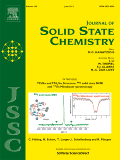
JOURNAL OF SOLID STATE CHEMISTRY
Charting New Territories in Materials ChemistryWelcome to the Journal of Solid State Chemistry, a prestigious publication that has been at the forefront of solid state chemistry research since its inception in 1969. Published by Academic Press Inc. Elsevier Science in the United States, this journal offers a rigorous platform for the dissemination of high-impact research articles and reviews in a wide array of categories such as Ceramics and Composites, Condensed Matter Physics, and Materials Chemistry, among others. With an impressive Q2 ranking across multiple categories in 2023 and a commendable performance in Scopus rankings—including a top position in Inorganic Chemistry—this journal serves as an essential resource for researchers, professionals, and students eager to advance their understanding in solid state phenomena. Although it does not currently offer Open Access options, the breadth and quality of the published research ensure significant visibility and scholarly impact. As we continue to converge into 2024, we invite you to explore groundbreaking studies that push the boundaries of knowledge in solid state chemistry.
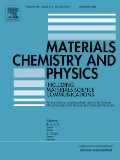
MATERIALS CHEMISTRY AND PHYSICS
Fostering Excellence in Materials Characterization and ApplicationsMATERIALS CHEMISTRY AND PHYSICS is a leading peer-reviewed journal published by Elsevier Science SA, focusing on the intersection of materials science and condensed matter physics. With an esteemed impact factor and a distinguished reputation in its field, this journal holds a Q1 ranking in Condensed Matter Physics and a Q2 ranking in miscellaneous Materials Science categories as of 2023. Spanning over three decades since its inception in 1983, it provides a vital platform for researchers, professionals, and students to disseminate cutting-edge findings and innovations in materials characterization, properties, and applications. The journal is indexed in Scopus, boasting impressive rankings that reflect its commitment to publishing high-quality research. Although it does not currently offer an Open Access option, it remains an essential resource for those seeking to stay at the forefront of materials chemistry and physics.
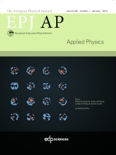
EUROPEAN PHYSICAL JOURNAL-APPLIED PHYSICS
Transforming Ideas into Impactful ResearchEUROPEAN PHYSICAL JOURNAL-APPLIED PHYSICS, published by EDP SCIENCES S A in France, serves as a vital platform for the dissemination of cutting-edge research in the fields of condensed matter physics, electronic, optical and magnetic materials, and instrumentation. With an ISSN of 1286-0042 and E-ISSN of 1286-0050, this journal has been a valuable resource for researchers since its inception in 1998, aiming to foster innovation and dialogue among professionals and academics alike. Featuring an impact factor that reflects its growing influence, the journal is currently ranked in the Q4 quartile for several related categories in 2023, underscoring its ongoing contributions to the scientific community despite its relatively competitive positioning. Access to the journal is available through various Open Access options, ensuring that pioneering research is readily accessible to all. As it continues to evolve towards its 2024 objectives, EUROPEAN PHYSICAL JOURNAL-APPLIED PHYSICS remains dedicated to advancing knowledge and facilitating collaboration in applied physics, making it an essential resource for students, researchers, and professionals dedicated to exploring the forefront of physical sciences.

PHYSICS OF THE SOLID STATE
Illuminating the Path of Interdisciplinary ResearchPhysics of the Solid State is a distinguished journal published by Pleiades Publishing Inc., focusing on the rapid advancements and fundamental research in the realms of condensed matter physics, electronic, optical, and magnetic materials. With an ISSN of 1063-7834 and an E-ISSN of 1090-6460, this journal serves as a crucial platform for disseminating high-quality research findings, insights, and reviews essential for both academic and industrial professionals in the field. As of 2023, its Scopus ranking places it in the 26th percentile for both Condensed Matter Physics and Electronic, Optical and Magnetic Materials, reflecting its evolving influence and contribution to the scientific community. Although currently classified in the Q4 quartile, the journal aims to foster interdisciplinary dialogue, improve research visibility, and enhance its impact on contemporary scientific challenges through rigorous peer-reviewed articles and focused special issues. Despite its traditional model of access, it continues to play a pivotal role in engaging researchers and fostering innovation in solid-state physics.

Journal of Advanced Dielectrics
Elevating the Standards of Dielectric and Material ResearchThe Journal of Advanced Dielectrics, published by World Scientific Publishing Co Pte Ltd, is a pivotal open-access platform since 2014 dedicated to advancing research in the fields of dielectrics, ceramics, and composites. Based in Singapore, this journal aims to bridge the gap between theoretical developments and practical applications in Electrical and Electronic Engineering, Condensed Matter Physics, and Electronic, Optical, and Magnetic Materials. With an impressive classification in the 2023 Quartile Rankings indicating its significance within its categories, and notable Scopus Rankings that highlight its impact and relevance, this journal serves as a vital resource for scholars and professionals committed to cutting-edge research and innovation. As it continues to flourish through the converging years from 2015 to 2024, the Journal of Advanced Dielectrics stands as an essential conduit for the dissemination of knowledge in advanced material sciences, making it an indispensable asset for today's research community.

SEMICONDUCTORS
Advancing the frontiers of semiconductor research.SEMICONDUCTORS, published by PLEIADES PUBLISHING INC, is a prominent journal that provides a platform for researchers and professionals in the fields of Atomic and Molecular Physics, Condensed Matter Physics, and Electronic, Optical and Magnetic Materials. With an ISSN of 1063-7826 and an E-ISSN of 1090-6479, the journal has been diligently disseminating knowledge since its inception in 1996 and continues to pave the way for innovative research until 2024. Although currently unclassified in the Open Access model, its influence is underscored by its rankings in Scopus, where it ranks in the 21st-22nd percentile across critical scientific categories. SEMICONDUCTORS serves as an essential resource for cutting-edge research, fostering a greater understanding of semiconductor materials and their applications, thereby assisting the scientific community in pushing the boundaries of technology and innovation.
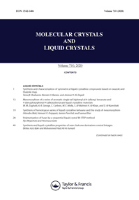
MOLECULAR CRYSTALS AND LIQUID CRYSTALS
Decoding the Dynamics of Molecular OrganizationMOLECULAR CRYSTALS AND LIQUID CRYSTALS is a distinguished journal published by Taylor & Francis Ltd, dedicated to the comprehensive examination of the structural and physical properties of molecular crystals and liquid crystals, with applications spanning fields such as chemistry, materials science, and condensed matter physics. Established in 1972, this journal has carved out a niche in the academic landscape despite facing recent challenges, as reflected in its current quartile rankings of Q4 across multiple categories in 2023. The journal not only serves as a platform for groundbreaking research but also invites contributions that further explore the intricate relationships between molecular organization and material properties, thereby advancing our understanding of these fascinating substances. With a commitment to fostering scientific dialogue, MOLECULAR CRYSTALS AND LIQUID CRYSTALS aims to reach a broad audience of researchers, professionals, and students, providing insights that are pivotal in driving innovation in materials research.
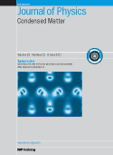
JOURNAL OF PHYSICS-CONDENSED MATTER
Bridging Fundamental Insights with Industrial Applications.JOURNAL OF PHYSICS-CONDENSED MATTER, published by IOP Publishing Ltd, stands as a premier platform for the dissemination of impactful research in the fields of condensed matter physics and materials science. Since its inception in 1989, this journal has successfully bridged the gap between fundamental and applied research, delivering cutting-edge findings pertinent to both the academic community and industry professionals. Ranking in the Q2 category for both Condensed Matter Physics and Materials Science, it holds a respectable position within the scientific community, as evidenced by its Scopus rankings. With a commitment to fostering innovative research and promoting open dialogue, the journal offers a substantial collection of articles that contribute to the evolving landscape of materials science and physics. Researchers and students are encouraged to engage with the journal’s rich content, which not only enhances their academic pursuits but also plays a crucial role in advancing technologies based on solid-state materials.
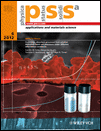
PHYSICA STATUS SOLIDI A-APPLICATIONS AND MATERIALS SCIENCE
Shaping the future of engineering and materials research.PHYSICA STATUS SOLIDI A-APPLICATIONS AND MATERIALS SCIENCE, published by WILEY-V C H VERLAG GMBH, stands as a prominent journal in the fields of condensed matter physics, materials science, and engineering. With an ISSN of 1862-6300 and E-ISSN 1862-6319, this journal has been actively contributing to scientific discourse since its inception. The journal currently holds a respectable Q2 ranking across several categories including Electrical and Electronic Engineering and Materials Chemistry, demonstrating its significance in advancing research and development within these domains. Although it does not offer open access, the journal ensures high-quality peer-reviewed content that is critical for researchers and professionals aiming to stay at the forefront of materials science innovations. The journal’s convergence years, extending from 2005 to 2024, reflects its ongoing commitment to publishing impactful research. By facilitating discussions on applications and advances in materials science, PHYSICA STATUS SOLIDI A continues to be an essential resource for those striving to contribute to this dynamic field.